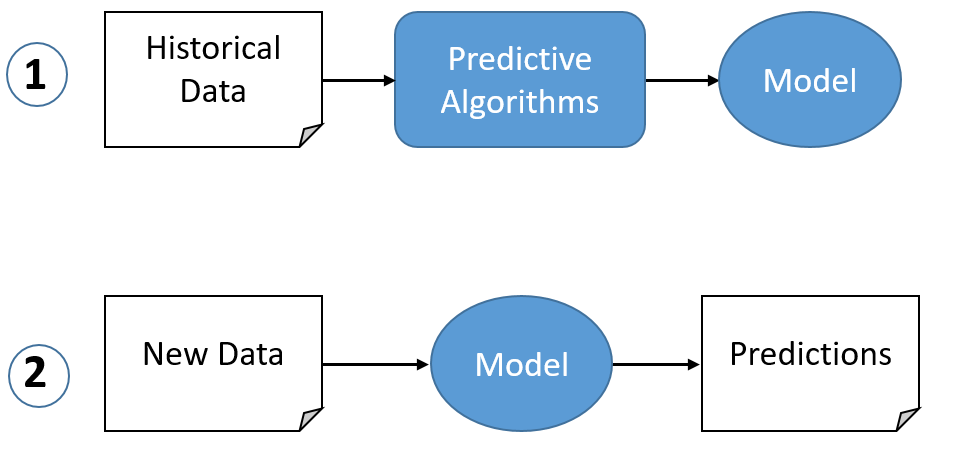Are You Asking the Right Predictive Questions?

Predictive analytics works by learning the patterns that exist in your historical data, then using those patterns to predict future outcomes. For example, if you need to predict if a customer will pay late, you’ll feed data samples from customers who paid on time and data from those who have paid late into your predictive analytics algorithm.
The process of feeding in historical data for different outcomes and enabling the algorithm to learn how to predict is called the training process. Once your algorithm determines a pattern, you pass on information about a new customer and it will make a prediction. But the first step is deciding what predictive questions you want to answer.
How do you know which predictive questions to ask?
When determining a predictive question, the rule of thumb is to base it on what you want to do with the answer.Following that logic, if we want to predict the number of late payments in a certain time frame—instead of if a particular person will pay late (as in the above example)—our predictive question should be: “How many customers will make late payments next month?”
Let’s look at a slightly more complex predictive question example. If we’re forecasting volume for a call center, our question might be: “How many calls will I get tomorrow?” That is a forecasting/regression question (like the one in the example above). However, we could also ask a binary question such as: “Will I get more than 200 calls tomorrow?” That is a classification question because the answer will either be yes or no.
The predictive question you should ask will depend on what you are going to do with the information. If you have the staff to handle 200 calls, then you will likely want to know if you’ll get 200 calls or not (so you’d ask the classification question). But if your goal is to identify how many calls you are going to get tomorrow so that you can staff accordingly, you would ask the forecasting question.
Let’s apply this rule to a different industry. If you’re in sales and your monthly goal is 250 sales referrals, you would ask a classification question such as: “Will I get 250 referrals or more next month?” But if you simply want to know your expected referral volume, without taking into consideration any monthly goals, then you’d ask the forecasting/regression question: “How many sales referrals will I get in the next month?”
Over time, you’ll be able to run multiple algorithms to pick the one that works best with your data, or even use an ensemble of algorithms. You’ll also want to regularly retrain your learning model to keep up with fluctuations in your data based on based on the time of year, what activities your business has underway, and other factors. Set a timeline—maybe once a month or once a quarter—to regularly retrain your predictive analytics learning module to update the information.

